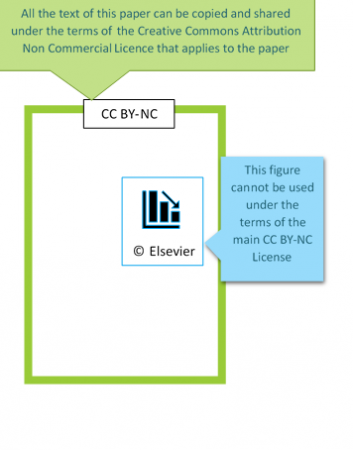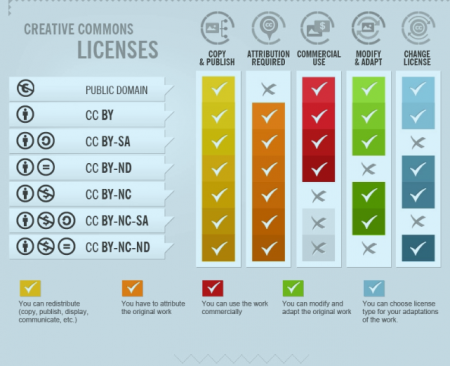In times of crisis it is important that research is shared rapidly but what else should researchers consider before informally publishing their report, briefing paper or working paper on a website, Spiral or a pre-print server?
Will this work become a journal article?
The first thing to consider is whether this informal publication is the final write up of your research or only a staging post on the way to formal publication in a journal. Most publishers accept that the research they receive as a paper may have already been presented in other formats, for example as a conference paper, a pre-print on arXiv or another preprint server, or a working paper on RePEc or SSRN, and do not reject papers because these earlier versions already exist. However, it is always wise to read the prior publication policies of the key journals in your field to make sure putting your research online now won’t stop you publishing later in your chosen journal. This information is normally included in the ‘for authors’ section of the journal website but if you can’t find this information or you have questions then you can always contact the editorial team.
Which is the best platform?
The first location most researchers think about for an informal publication is a personal or departmental website. This works well when you or your research group have a strong brand and the traffic to these sites is already high, but when you are starting out in your research career it is good to share a platform with others in your university or subject. You can do this by depositing your publication in Spiral, Imperial’s research repository, or a pre-print server in your subject area.
Spiral offers a secure home for your publication, a DOI link that will never break, and usage metrics via Altmetric so you can track who is discussing your work and where. This is useful when you are asked to explain the real-world impact of your research or write an impact statement. Once you have uploaded your publication to Spiral you can link to it from departmental webpages, networking sites and social media sites using a DOI link (e.g. https://doi.org/10.25561/76707).
Depositing your work in Spiral also has copyright and licensing advantages because there is just one copy, with one copyright and licensing statement of your choice not multiple copies on multiple platforms all with different licensing options and use licenses.
If you do decide to upload your publication to another platform, read the service’s terms of use and copyright policies so that you are clear about what you are permitted to upload and how others can use your publication once it is publicly available. For comparison, ResearchGate simply hosts what you upload but the pre-print server bioRxiv asks users to choose a Creative Commons Licence for each uploaded paper to make them easier to share and reuse. Both licensing approaches have their advantages and disadvantages so you should pick the platform that works best for you and your research.
Who is the copyright holder?
The authors or the department can be named as the copyright holder. Through the College’s Intellectual Property Policy Imperial has waived its automatic right to copyright in research publication. Therefore it is recommended that copyright should be assigned jointly to the authors and that any alternative is agreed with them when work is commissioned.
This approach will avoid a situation whereby authors must request a department’s permission each time they want to reuse and publish extracts from the publication in journal articles. It allows a department to own copyright when a report or paper is the final work and it is more practical for a department to handle reproduction and translation requests.
How do I show ownership?
The next thing to think about is protecting your intellectual property and making sure you get the credit for your work. A myth has grown up that if you can view something on the web then you can reuse it in any way that you like. Make it clear to others this isn’t true by adding a copyright statement like the one below.
© 2020 The Authors. Published by Imperial College Business School
What is the advantage of a Creative Commons Licence?
When you add a Creative Commons licence to your work, you make it clear that it can be copied and redistributed so long as you are acknowledged as the author. If you make something easy to share then more people will do this and your research is more likely to get noticed and discussed.
Creative Commons Licences permit others to copy and share all or part of your work but only on the condition that the original author and source are credited. They are simple for others to read because they are written in plain English and familiar because they are already used in open access journal publishing. An earlier blog post, Your choice! Selecting a Creative Commons Licence, will help you get you understand the pros and cons of the six different licences. This is a sample copyright statement taken from an Imperial report :
© 2020 The Authors. Published by The Grantham Institute for Climate Change under the terms of the Creative Commons Attribution License https://creativecommons.org/licenses/by/4.0/
In this example if this report was uploaded to Spiral then anyone reading it should note the Creative Commons Attribution License displayed on the document. The default licence applied to work deposited in Spiral is a Creative Commons Attribution NonCommercial NoDerivatives License. If you apply a more permissive licence to your work (as above) this will override the Spiral default licence
How do I make sure others cite my work?
The best approach is to remove the intellectual effort of creating a citation by providing a suggested citation that they can copy and paste. You can take your inspiration from journals or adapt the example below. This report has a DOI because it was uploaded to Spiral but if your report has no DOI then insert a URL link to the hosting website.
SUGGESTED CITATION
Ghafur S, Fontana G, Halligan J, O’Shaughnessy J, Darzi A. NHS data: Maximising its impact on the health and wealth of the United Kingdom. Imperial College London (2020) doi: 10.25561/76409
What if all the content is not yours?
Sometimes you will include text and figures from previously published papers, yours and others, in a new publication. When you do this, you must be confident that your use is covered by: the UK copyright exception Quotation, Criticism & Review, a compatible Creative Commons License or direct permission from the publisher. Publishing agreements, even open access publishing agreements, often still ask authors to give the publisher the exclusive right to publish the paper’s contents.
While citing the source of reproduced text and figures is second nature, copyright, licencing and permission statements are often forgotten, leaving the reader to assume that the copied figure is owned and licensed under the same terms as the new publication. This may not always be the case, especially in a review paper, and may result in another researcher inadvertently reusing the figure without permission in a future paper.
For example, a figure in a paper has a copyright status ‘© 2020 Elsevier. All rights reserved.’ but you reuse it in a new publication which will be licensed under a Creative Commons NonCommercial License. It is important to alert the reader to the fact that the reuse terms of the copied figure are different and that you are unable to provide them with permission to copy and share it along with the original parts of your paper.

Figures have a commercial value to publishers and the expectation is that the first journal is paid for re-use of a figure by the second journal or that both are members of STM and follow the STM guidelines on reciprocal reuse of figures.
In summary
When you make a publication available on the web you become the publisher. This is positive as it puts you in control of copyright and licensing decisions and allows you to license your publication in the way that is best for you and your research. However, it also means that you must take on some of the tasks automatically done by your publisher and that you normally wouldn’t think about. Hopefully this article has shown you that this is not as hard as you might think and that a little bit of knowledge will get you a long way.
Help and support
The Library’s Scholarly Communications team are happy to speak to you about any of the topics mentioned in this blog post. You can contact us via ASK the Library
You may also like to read our webpages about Publishing with Spiral. Much of this advice also applies to informally publishing on other platforms.
Philippa Hatch
Copyright and Licensing Manager, Library Services.


